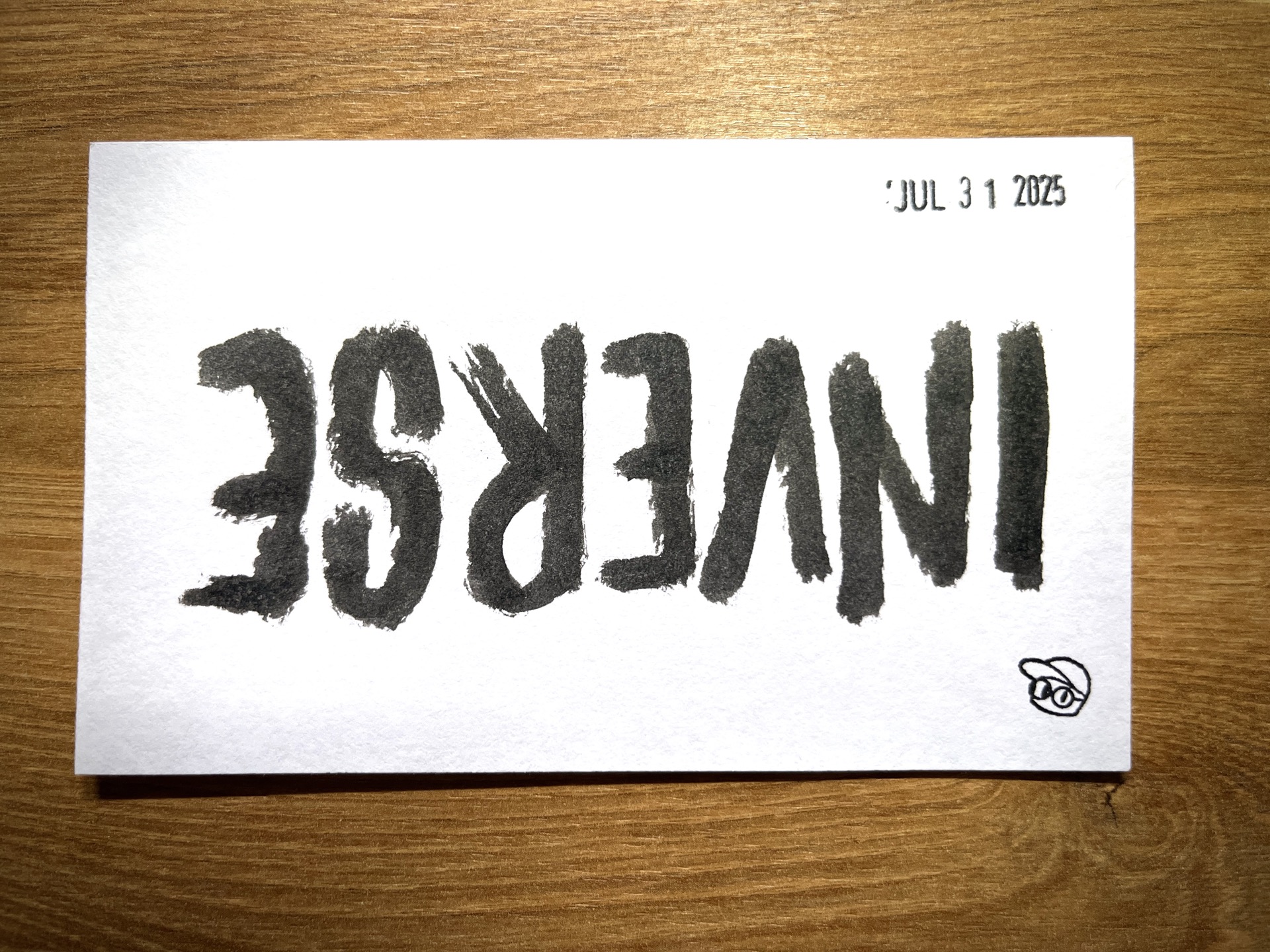One of the techniques I reach for when I’m stuck — whether it’s a gnarly technical problem or a foggy interpersonal one — is inversion.
It’s the idea of flipping a problem upside down to see it from the other side. Instead of asking, “How do I make this better?” I ask, “How would I make this worse?”
It’s not about being cynical. It’s about finding clarity through contrast.
Because sometimes the best way to find your answer… is to first find your anti-answer.
Pilots
I first understood the power of inversion years ago, through a short clip of Charlie Munger — sharing wisdom in his usual no-nonsense way.
Before he became famous as Warren Buffett’s right-hand man, Charlie was a meteorologist during World War II. His job? Create weather maps that would help pilots fly safely.
To do that well, he didn’t just try to be accurate. He inverted the problem.
“Suppose I wanted to kill a lot of pilots… what would be the easiest way to do it?”
It’s a morbid question. But it got him to the truth.
Planes icing over. Running out of fuel. Those were the top killers.
“So I made up my mind. I was going to stay miles away from killing pilots.”
Instead of focusing on how to save lives, he studied how lives were lost. And in doing so, he made better decisions — faster, clearer, and with more conviction. In doing so, he became a much better meterologist.
That’s inversion. And once I saw it, I started spotting it everywhere.
Telegraph
A few years ago, I applied this same technique to a completely different challenge: becoming a better communicator.
The question I asked myself was absurd on purpose:
“Suppose I wanted to be the worst communicator ever… what would I do?”
First obvious answer:
Don’t talk to anybody. Ever.
But I wanted to go deeper. What does communication really mean? What makes it good? What makes it terrible?
Somehow, this rabbit hole led me to a concept from martial arts (and fighting games!) called “telegraphing.”
---
Sidenote: I don't practice martial arts or play any fighting games. They're just topics of interest from me. Things I study from afar. Back to the post!
---
Telegraphing is when you accidentally give away your move before you make it. You wind up too much. You signal your next punch. You let the other person see it coming.
It’s a problem because it gives them time to react — to counter — before you even make contact.
An example would be Donkey Kong’s wind-up punch in Super Smash Bros. You know it’s coming from a mile away — and you usually can counter it. Usually.
In that world, telegraphing is bad — probably the worst thing you can do. The less your opponent knows, the better.
So to avoid getting knocked out, fighters train themselves to hide their intentions.
But they don’t just hide them. Sometimes, they fake them.
They throw a false signal. A feint. A decoy move. Something that tricks the opponent into reacting the wrong way — so they can strike from the other side. It’s 4D chess happening in microseconds.
So in that world, the worst thing you could do is communicate your intent.
Which got me thinking:
If that’s what it means to lose a match in Smash Bros — What’s the inverse?
If I wanted to be a great communicator — What would it mean to be great at telegraphing?
That’s when my original question:
“How do I become a better communicator?”
Flipped into something way more interesting:
“How do I become really good at telegraphing?”
Not just saying the thing. But showing what I’m about to do.
Making it visible. Sharable. Trackable.
So I flipped it.
This means sharing early. Sharing often. More often than you think. Sharing ideas with multiple people, in multiple places. Giving updates as I go. Writing down notes, organizing them, and sharing them again. Giving so much of what I’m thinking, of what I’m doing, of what I’m about to do — that at any point, anyone can feel what I’m up to. That at any point, anyone could counter me.
And unlike fighting games, nobody’s getting knocked out. Hopefully.
This interaction — of telegraphing, of anticipation, of counter — in the context of communication?
It goes by another name.
Collaboration.
Flip
Let’s try something.
What would a terrible workday look like? What would it feel like? What would you have done? What would you have avoided?
Now flip it.
What could you do to make that not happen?
Even if you can’t change everything — what small thing could you do to nudge things in the opposite direction?
Maybe it’s a little more prep. Maybe it’s just checking in on someone. Maybe it’s just saying hi.
To do something not bad to make your day — or someone else’s — a little bit better.
Perspective
Inversion won’t always give you the answer. But it almost always gives you a different perspective — a series of better questions to ask.
It cuts through assumptions. It reframes the obvious. It helps you see what’s missing — by showing you what to avoid.
It’s about getting so specific about failure, that success becomes undeniable.
Inversion doesn’t fix your whole life. But it shows you the shape of what’s wrong. And once you see it clearly… you can build something better.
So the next time you’re stuck, try this:
“If I wanted this to go completely wrong… what would I do?”
Now do the opposite.
And doing so, in the right moments, might just save your pilots.
